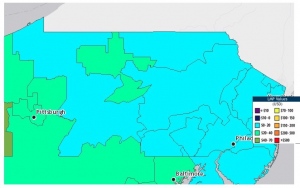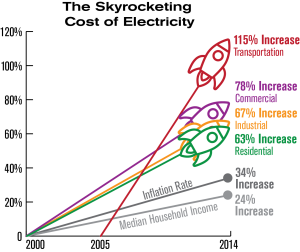It is important to know what the exact picture is unit comes to establishing a relationship between demand and Balch Springs Electricity Rates to show that the demand side can be managed effectively. In the year 2002, it was tried to explain that the elasticity of requirement of energy can be short term as well as long term. In short-run elasticity, the price response from the system is described in relation to the current infrastructure and equipment. In long-range elasticity, the investments are considered that can be done to deal with higher prices span of time.

In the year 2011, it was observed that the electricity markets tend to have a lower elasticity when it comes to demand. It can be said so in the short run at least. Now if you have to deal with low demand elasticity then there will be implementation of bigger price spikes in the current pricing markets. It was concluded that the customers also respond in a similar way if the early Pixar short enterprise is hired for a longer time.
A steep slope of the demand curve was observed in a particular country in the year 2012 during a field test but this also proves that if dynamic tariffs are implemented then demand elasticity can be achieved. However, the one thing that stays is that the elasticity in demand Can only be expected to increase in winters because the electricity demand is not much elastic in summers. In the year 2003 it was observed that implementing dynamic energy rates will help to increase the elasticity in demand also the demand curves are steep or dayshift depending on what time of the day it is or what day of the week it is will stop in the year 2000 the short term price response was studied in England and Wales in the electricity market.
What was done was that half early prices were announced about 13 hours beforehand. In the study, boots cross elasticity and self elasticity work-study. What cross elasticity means is that the demand for electricity changes in a particular time with respect to a change in the rate of energy adding another period of time. The researchers had formed a matrix of 48 by 48. It was a matrix of elasticity coefficients. Another thing that was put across was that the customers do not tend to react to an increase in price In the short term unless the increase in the price is pretty high. So this response in which the demand decreases can you because of the consumption schedule.
But this scheduling requires a technology that is relatively somewhat tiresome. The short-term price drops may not elicit much of a response from the customers but a short-term increase in price definitely will. A nonlinear elasticity function was developed from this entire research. But even after all these studies, In the year 2010, it was explained that it can be pretty hard to determine an exact formula that would be able to calculate the demand because the demand for electricity will vary from customer to customer even to event and it will also vary according to the price structure.




